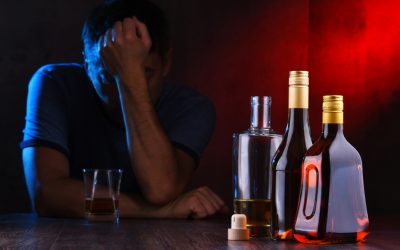Alcoholic Nose: Can Alcohol Cause Rhinophyma? Signs & Treatment
Test Post for WordPress
3 janvier 2025Test Post for WordPress
3 février 2025This deformation can impact breathing and cause discomfort, requiring medical intervention. Early diagnosis and treatment are crucial in preventing such severe outcomes. The exact cause of rhinophyma is still unknown, but several factors can contribute to its development. Understanding these factors can help in managing and possibly preventing the condition. Additionally, alcohol addiction has been linked to the exacerbation of rhinophyma, highlighting the importance of addressing alcohol use in managing this condition.
Worried about changes in your skin? Learn about proven solutions for treating rhinophyma.
This lets you make informed decisions about consumption while managing the condition effectively. Blood vessels gradually dilate, skin texture changes from smooth to bumpy, and tissue overgrowth creates deep grooves and weird nodular formations. Before starting treatment, each person will undergo an assessment to determine which levels of care and types of treatment would support their goals.
Alternatively, someone who suffers from alcohol addiction may feel like their rosacea is a constant, visible reminder of their struggles. Fortunately, it is possible to manage symptoms of rhinophyma to lessen their impact on daily https://ecosoberhouse.com/ life. Most medical treatments for rhinophyma are covered by health insurance when deemed medically necessary. Insurance typically covers medications prescribed for rosacea, dermatologist consultations and follow-up care, and surgical procedures when conservative treatments have failed. At The Recovery Village Palmer Lake, we understand that people may face multiple health challenges simultaneously.
More on Skin Problems and Treatments
This is why some individuals may experience a feeling of warmth or flushing after consuming alcohol. This can increase the risk of cardiovascular disease, including heart attack and stroke. Chronic alcohol consumption can also lead to the formation of blood clots, which can block blood vessels and increase the risk of heart attack or stroke. While stopping alcohol consumption won’t reverse existing rhinophyma, it can help prevent the condition from worsening. Alcohol causes blood vessels to dilate and can trigger inflammation, which may exacerbate both rosacea and rhinophyma symptoms.
- Understanding the actual causes, risks, and treatment options for Alcohol Nose is essential to address the stigma and provide appropriate care.
- While stopping alcohol consumption won’t reverse existing rhinophyma, it can help prevent the condition from worsening.
- Start at Los Angeles International Airport, 1 World Way, Los Angeles, CA 90045.Head west on World Way toward Vicksburg Ave.
- Excessive consumption of alcohol may also lead to the development of spider veins on the face.
Alcoholic Nose Red Appearance, Alcohol Nose Pictures, Alcoholoism Now Signs & How to Treat an Alcoholic Nose?
Rhinophyma is more common in men than women, though people of all genders can develop the condition. It’s not entirely clear why Rosacea sometimes develops into and causes Rhinophyma. However, Rhinophyma of the nose typically requires treatment from several specialists, including an ear, nose, and throat doctor who can help address breathing and airway concerns. Any noticeable changes in your nose, especially if accompanied by tenderness or breathing difficulties, warrant a visit to a dermatologist or a doctor. They can accurately diagnose the cause of the changes and advise you on suitable treatment options. In severe cases, rhinophyma can lead to significant deformation of the nose, making it appear bulbous and disfigured.
Non-Alcoholic Causes of Rhinophyma
Long-term alcohol addiction can damage circulatory function, making it harder for the skin to repair itself. This can lead to persistent redness, broken blood vessels, and increased skin thickness. Alcohol is a vasodilator, meaning it widens blood vessels, leading to flushing, redness, and increased visibility of broken capillaries. Over time, frequent alcohol consumption can contribute to persistent redness on the nose and face.
Wearing wide-brimmed hats and seeking shade during peak sun hours (10 AM to 4 PM) provides additional protection. Polarized sunglasses can reduce reflected UV exposure and may help prevent eye-related rosacea symptoms. While genetic predisposition cannot be changed, various lifestyle modifications can help prevent rosacea flares and potentially slow the progression to rhinophyma. Cryotherapy, which uses liquid nitrogen to freeze and remove tissue, is sometimes used for smaller areas of involvement.
Scientific Understanding
Not all heavy drinkers will develop a Gin Blossom nose, and not everyone with a red or swollen nose is a heavy drinker. Other factors, such as genetics, sun exposure, and certain medical conditions, can also contribute to the development of rosacea. Excessive drinking while already suffering from Rhinophyma, a rare medical condition, can spur the worsening of an alcoholism red nose.
- There are many effective treatments for alcohol addiction, and Zinnia Health can give you the support you need to overcome your addiction and start living a healthier life.
- Understanding the causes of alcoholic nose, its symptoms, and how to treat alcoholic nose can help manage the condition effectively.
- Furthermore, alcoholics should avoid using harsh cleansers or other topical products on the skin, as these can dry out the skin and further exacerbate the redness of the nose.
Risk Factors for Alcoholic Nose
They can help prescribe a lotion or medication that you can take to reduce the inflammation and lower the visible symptoms of your rosacea. Rosacea is a chronic skin condition and disorder that causes the skin to appear different in texture, pigment, and size than normal skin. Over the years, several quirky and interesting terms for alcoholics’ noses took off and became popular to refer to people with larger or purplish-red noses. Unfortunately, the medical definition for it faded into doctors’ circles as the term alcoholic nose took off in Halfway house modern society.
It’s a long-held belief that alcohol abuse causes this skin disease, like the red nose skin condition called rhinophyma. The phrase alcoholic nose is another example of the stigma and misinformation surrounding alcohol use disorder. Many speculations have been made that alcohol could result in a large red nose for some people, specifically that such a trait indicates an addiction.
Proactive measures can make a significant difference in the quality of life for individuals with rosacea. Addressing alcohol abuse is also crucial in prevention, as excessive drinking can exacerbate rosacea symptoms and lead to further complications. An alcoholic nose is typically marked by redness, swelling, and a bulbous appearance. In advanced cases, the skin may appear thickened and rough, with a noticeable purple or red does drinking alcohol make your nose bigger hue. These changes occur due to chronic inflammation and damaged capillaries, often worsened by triggers like alcohol overconsumption, extreme temperatures, or stress.


